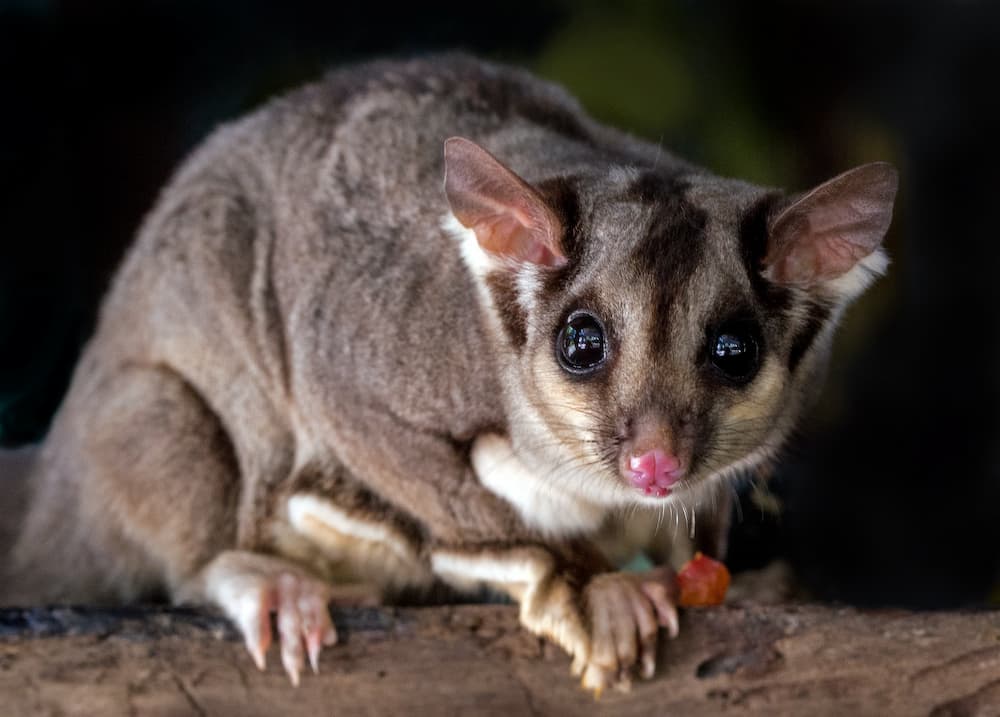Can Sugar Gliders Eat Watermelon?
You’d love to share a refreshing watermelon with your sugar glider, but you’re probably wondering is sugar gliders can eat watermelon? The short answer to the question is yes, but the complete answer is only in moderation.
Watermelon is ruby-red, crunchy, juicy and sweet. Obviously! But are watermelons a fruit or a vegetable? The answer actually surprises most people. Would you believe it if I told you that watermelon is both? The reason is due to the watermelon being grown as a vegetable crop using vegetable production systems, therefore watermelons are considered a vegetable. But regardless of whether you consider it a fruit or vegetable, we can all agree that watermelon is a one-of-a-kind taste treat.
Nutritional Value Of Watermelon
It’s normal to want to share your treats with your sugar glider, but just like humans, given the chance, a sugar glider will sometimes overindulge on goodies.
Part of the reason sugar gliders should only eat small bits of watermelon lies in its name: watermelon. This delicious delicacy is more than 90% water, and too much water can give a sugar glider problem. On the other hand, watermelon is a healthy treat that’s loaded with nutrients that are good for both you and your sugar glider.
As previously mentioned, watermelon is aptly named, as it’s nearly 100% water. As you would expect, it’s low in fat, making it a great low-calorie sweet. One cup of diced watermelon contains, on average, 43 calories.
Can Sugar Gliders Eat The Rind And Seeds Of A Watermelon?
Unlike the fragrant flesh of the watermelon, the rind of a watermelon shouldn’t be given to a sugar glider as it contains citrulline, which is a sharp-tasting amino acid, and of course, is not nearly as pleasant-tasting as the meat.
While humans can eat watermelon seeds, you should avoid giving the seeds of a watermelon to your sugar glider if possible. Some glider owners try to get seedless watermelons but there are owners who will give their sugar gliders watermelon with the seeds in, as the sugar glider should eat around the seeds.
Introducing Watermelon To Your Sugar Glider
Watermelons have a higher sugar content which can disrupt the digestive system, which is one of the reasons for introducing watermelon slowly and with small pieces.
If you want to treat your sugar glider to some watermelon, do it gradually. A small piece of watermelon once a week should be enough for you to get an idea of how your sugar glider tolerates watermelon.
Picking The Perfect Watermelon For Your Sugar Glider
Professional watermelon pickers turn watermelons upside down and look for a pale-yellow spot where the rind rested against the earth. To them, this buttery mark on the watermelon is a sign of ripeness.
When you’re picking a watermelon out in the supermarket, you should do the same, because, unlike some other fruit, a watermelon won’t ripen after being removed from the vine.
A pale green or white spot under the melon indicates that it was not ripe when it was picked.
Next, perform a quick eyeball test. Look at the watermelon carefully, ensuring that there’re no cuts or soft spots.
The watermelon should be firm all the way around, while the rind should be hard, the melon should feel heavy as most of what you’re holding in your hands is water.
Conclusion
If you decide to introduce your sugar glider to some watermelon, it’s a good idea to watch as they explore and try their new treat. You’ll learn soon enough if they like it or not. If your sugar glider loves their new treat, always remember that moderation is key. You can give them a small piece of watermelon once or twice a week (depending on how good their diet is).
